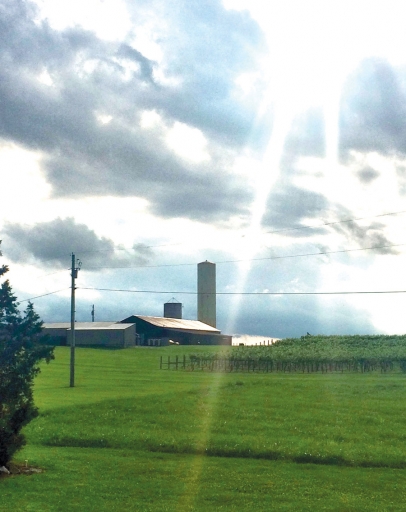From Appalachia to Bourbon Country
Seeing American flavor in Kentucky
One of the eye-opening things about exploring America by car is witnessing the changes, natural and cultural, that give rise to sense of place. In that way, Kentucky is singular. From the gray-tinged mountains of Appalachia to the stately fields of bourbon country, high and low intersect by the mile—and the genesis point for elegance isn’t simply demarcated.
For a hungry traveler, it’s tough to say which region produces the most crave-worthy experiences. Along the rocky spine that juts up from Tennessee, seasonal mountain cuisine hums with a soft, southern heartbeat. There, one finds fresh-picked greens, well-seasoned beans and more than enough kitchen wisdom to fill an encyclopedia. Moving west, past fields where the world’s most sought-after horses are raised, bourbon barrels rest in historic rick-houses, aging sites where time and temperature guide a delicious transformation.
On a road trip to celebrate my 40th birthday, my husband and I explored a swath of the Bluegrass State, tracing a path from Red River Gorge in northeastern Appalachia to Louisville, with a healthy dip through bourbon country along the way. It confirmed what we suspected: Deliciousness comes in many forms.
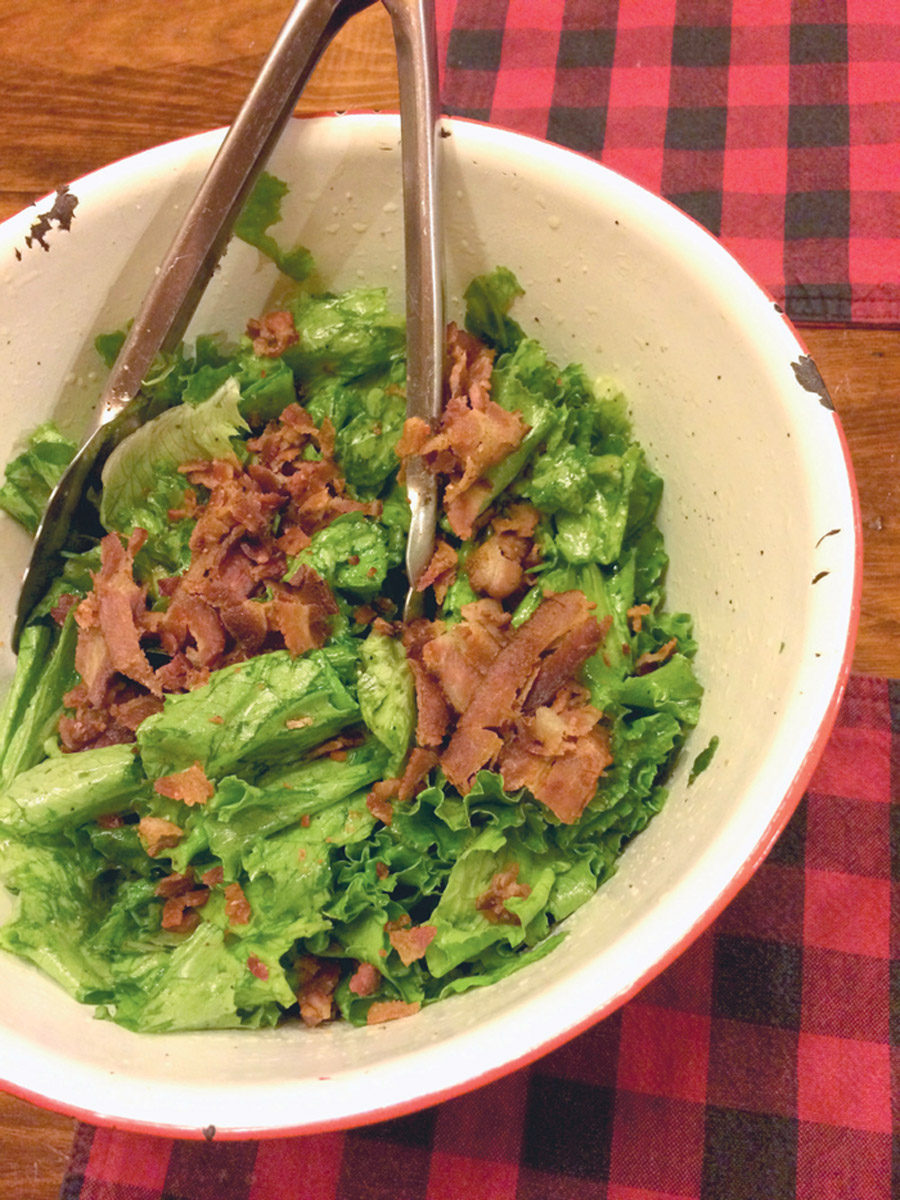
Taste of Appalachia
Morning, and the chorus of Eastern Kentucky is birdsong. From the porch of our cabin, where we lounge in rockers and sip coffee, my husband and I can see the treetops descending into the holler below. It was a long drive to get here, up and down the Shenandoahs where we watched brown bears lunch along the roadside, and then on through the impossible beauty of West Virginia. Ensconced in our little Kentucky home base in the woods, it’s mighty peaceful, though carpenter bees work tirelessly to bore into the façade, bouncing off the wood with each failed attempt: Thunk. Thunk. Eventually one succeeds, and its music settles down to a resonant buzz.
Natural phenomena aside, the prevailing feeling is one of stillness. Fitting for the smallest of the Cabins of Birch Hollow, dubbed Snuggle Inn—which to be fair, comes luxe-equipped with a fire pit and hot tub. The latter has been put to good use.
The day before, we wandered soaring natural bridges, the most found this side of the Mississippi. Amid vast canyons, more than 100 soaring sandstone arches were carved by rivers, erosion and other phenomena over time. We first stopped for a lunch of knockout hotdogs (seriously) at climber’s haven Sky Bridge Station, where we made the mistake of arriving on a Sunday. Blue laws forbid the purchase of local brews on the Lord’s day. Yet the Epic Journey dog made up for it, piled high with jalapeño, chipotle mayo and fried onions. Chastened, and very full, we opted for a sky ride up the mountainside at Natural Bridge State Park. Near the peak, we stared through a sky-filled window carved of rock: astounding. Then we wound our way down several miles of steep trail.
An early-day spell on the porch offers respite for weary legs.
We normally plan urban escapes, yet I see the draw of the rural. To relax with book in hand in the quiet of Appalachia’s northern edge is a special form of magic. And the thread for us, always, is food. Rocking in mountain air, I read from Ronnie Lundy’s “Victuals,” a love letter of a cookbook that explores her home region’s cuisine. Though she’s from Corbin, two hours south across a landscape carved from stone, her words resonate.
“It turns out my people, the people of the Southern Appalachian Mountains, have been right about victuals all along,” she writes. “About the way you say them, the way you raise them, the way you cook them, keep them, and share them. . . . About the connection between earth and table, and between the table and the people sitting around it.” Reading about roots and seeds, beans and preservation, a theme emerges. In Appalachian dishes from West Virginia on through to Ohio, mastery resides in the details, in ingredients like salt pork that leave an indelible mark.
In a 2016 Washington Post article, Jane Black called Appalachian food “America’s own cucina povera.” It’s scrappy, necessity-driven. More to the point: It’s wise. Fat rendered from the hog becomes cooking grease, unctuous and rich. Beans with distinct names— red clay pea, turkey crowder—are picked and dried, fodder for long mountain winters. Lundy writes of her surprise at how little folks outside of Appalachia know about favorites such as the speckled butter bean, which is “like eating the soul of the earth.
”Equipped with a full kitchen and her words, we explore. Sorghum adds a note that we will forevermore crave in “simple” tomato sauce. Soup beans beg for crusty bread. We fall hardest, though, for one of the simplest dishes, a summer staple known as killed lettuce.
While my husband grills steaks, I fry up bacon to gather its grease. Then I rip up a head of romaine and shower it with green onions. Finally, a dousing of cider vinegar, salt and pepper, then into the bowl with the hot fat for a quick toss, which wilts the greens and renders them silky but still taut. “My mother would make a skillet of cornbread and that would be our meal—something primal and reviving in that big bowl of hot dressed greens,” Lundy writes.
She’s right about that.
I’m from Jersey, not Appalachia, but the heritage Lundy champions hearkens to the food on which I was raised. My mom cooked with humble ingredients and plenty of mother love. Scratch cooking was necessity, not luxury, yet it shone. (I challenge anyone who walked through the kitchen door after school to the scent of fresh-baked sandwich bread to defy that.)
This is why Lundy’s book matters, its natural poetry aside. It’s why anyone who wants to understand American food should spend time here. Older cooking methods have been handed down, yet they’re not static, not nostalgic. Throughout the region, rising generations continue to add their own wisdom to the pot.
On a rainy day, we drive south, sipping Ale 8 soda, a citrusy Kentucky ginger ale. Towns rise and recede, angled every which way by virtue of geography. It’s a landscape of front-porch sitting and fast-food restaurants, of gas stations that offer homemade treats. One feels far away, though I-75 hides just around the bend.
Eventually, we stop in Berea, an artsy college town with abolitionist roots that showcases another side of the region. The historic Boone Tavern Dining Room is affiliated with Berea College, which recruits from the Appalachian diaspora. Very “ladies who lunch,” it is staffed by students, all of whom pursue 10 weekly hours of work-study. Here, we find a mean Kentucky Hot Brown sandwich, a 20s-era caloric wonder created by its namesake Louisville hotel. Piled high with turkey and bacon, and served open-faced on double- thick Texas toast with a creamy, Pecorino Romano–laced sauce, it’s not for the faint of heart. Luckily, we started with beer cheese, a Kentucky-born dip that tastes much like it sounds. Cheddar is infused with a bit of beer, hot pepper and flavorings like hot mustard, garlic or horseradish.
In town, art studios showcase Appalachia’s penchant for craft. We talk for a while with Berea graduate Justin Burton, who studied broomcraft as a student and now sells them under the brand name The Broom House. His pieces are functional, yet worthy as art: modern lines emerging from an age-old craft. These art forms are worth preserving, and Burton aims to do his part.
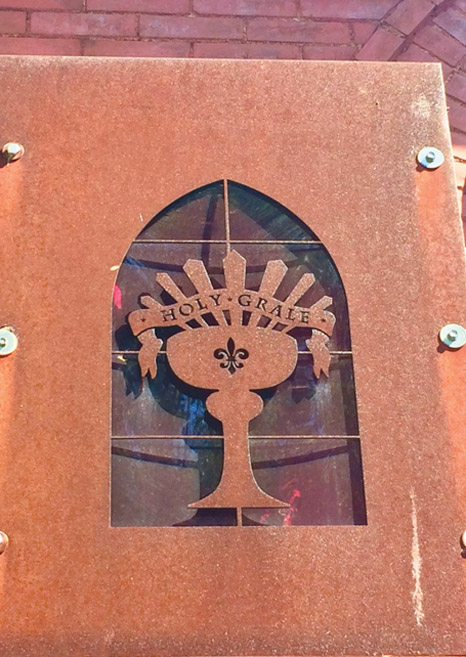
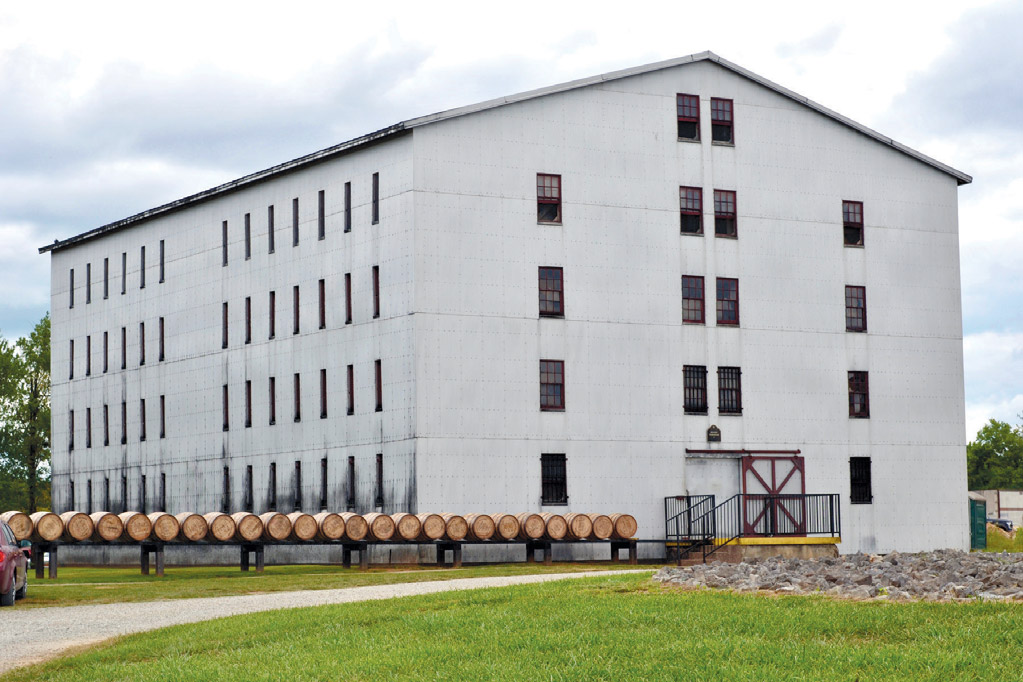
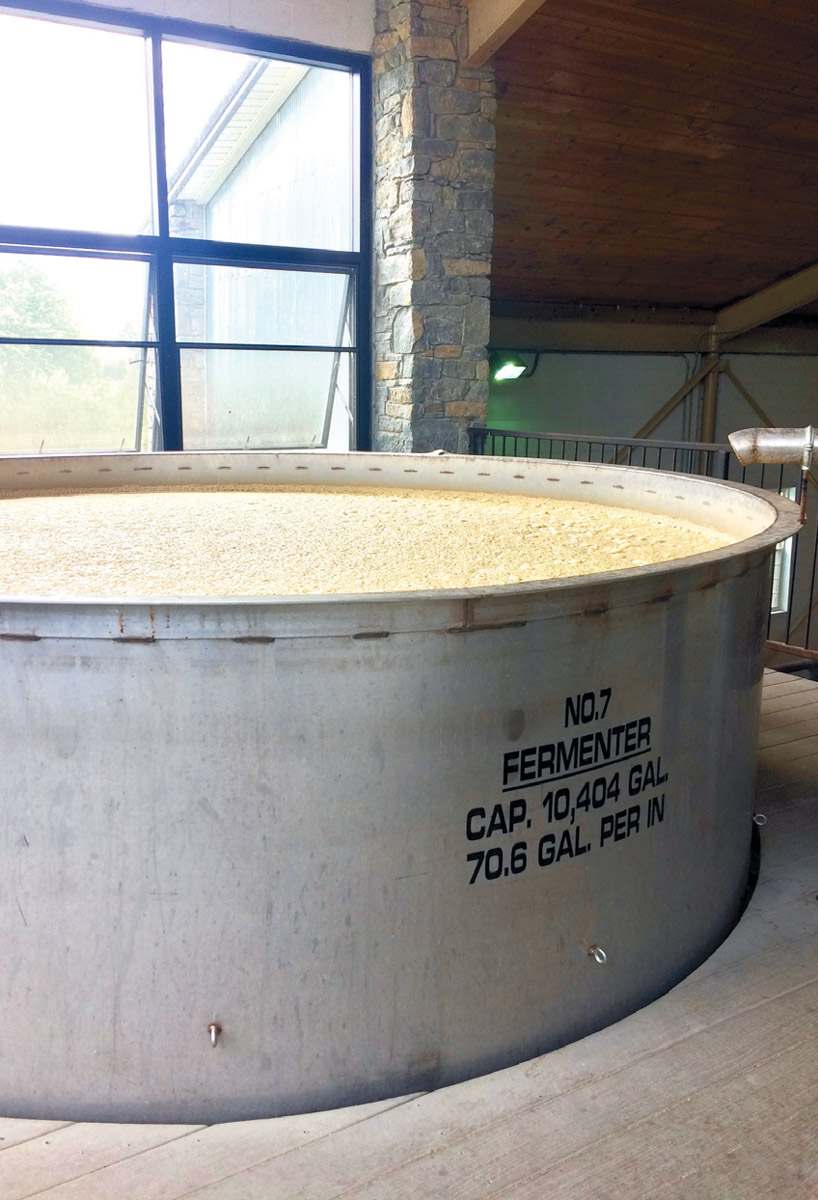
It would be easy to visit Kentucky and never make it beyond the big boys, which are incredible to behold. Yet to limit one’s explorations there would be to miss out on an important part of the story. Innovation is happening along the Kentucky Bourbon Trail Craft Tour, an alternate path that showcases smaller producers who have room to push the bounds.

Bourbon Chaser
It is difficult to leave our sweet Snuggle Inn, yet this is Kentucky and the bourbon trail calls. An impressive 95% of the world’s stock is crafted here in the state, comprising an $8.5 billion industry. On a bright morning, we pack, bid farewell to our cabin, and head toward Lexington.
By the time we arrive in the stately city, characteristically, we are starved. A trip to gastropub The Village Idiot does wonders. A deep draft list features brews from fellow locals like West Sixth and plenty of contemporary comforts, including a Korean fried-chicken sandwich that arrives wedged inside of a proper Southern biscuit. Seated at a sidewalk table, we get a first glimpse into another side of the state, one where big money is made and spent on the bourbon and thoroughbred circuits. The women are equestrian chic: beautifully tailored shirts paired with shoes that whisper “expensive.” Yet everyone is welcoming.
Fortified, it is on to our first distillery.
It would be easy to visit Kentucky and never make it beyond the big boys, which are incredible to behold. Yet to limit one’s explorations there would be to miss out on an important part of the story. Innovation is happening along the Kentucky Bourbon Trail Craft Tour, an alternate path that showcases smaller producers who have room to push the bounds.
This comes to life in shades of purple-blue at Bluegrass Distillers, tucked away in a pseudo-industrial area with an indie vibe. There, master distiller Kee Pyles is creating a unique line of bourbons, including one from blue corn, which is in the fermenter when we visit. This is the only blue-corn bourbon currently sold in the state. When the distillery first opened, the indigo-hued grain was added to the mash bill as an experiment conducted with chemical engineering interns from the University of Kentucky.
Pyles offers a tidy metaphor to explain what drew him to craft. “You’re always going to get a better burger going to a mom and pop shop, rather than McDonald’s, because the quality is there,” he says. “Working at a craft distillery, you are able to tweak things and have the freedom to improve things. There is no set recipe. With craft, it puts the art aspect back into making bourbon.
”Using a copper pot still from Portugal that co-owner Nathan Brown sourced while on vacation, Bluegrass began distilling in 2013, experimenting with mash bills before opening to the public in 2015. They settled on 75% corn as a baseline. “A lot of distilleries stick to the 60 to 70% corn content. We have 75%, which is really high,” explains Reni Coulson, who handles public relations and marketing for the distillery. “We really like it at such a high corn content because it almost masks the flavor of the alcohol.” They pushed it higher in their second bourbon mash bill, an 89-proof, 80/20 corn-to-rye mix. At first taste, that corn sweetness is balanced with a smoky, fruit jam note that gives way to a spicy, highrye kick. Unaged “Blue Dog,” made with blue corn and wheat, is floral and eye-opening at 100 proof, but eminently drinkable.
Coulson offers a compelling reason to make time for the smaller players. “You get to see the entire process. We don’t pick and choose,” she says. It’s also more personal. “Not that we’re a family, like blood family, but we have a small team and we get really close to each other.” Bonus: Their spirits generally can’t be found elsewhere. “Every bottle is handmade.
”Leaving town, we make time for a glass of wine at Talon Winery, the grounds for which evoke equine fantasies. A pending storm paints the sky in high contrast, and the grass goes dark green. It’s tempting to hit another distillery, but one can only imbibe so much in a day, even on vacation. We bed down at Maple Hill Manor in Springfield, an 1851 plantation home and alpaca farm where, it turns out, Giants quarterback and Super Bowl MVP Phil Simms was born and raised. (It must have been Jersey radar.) The rambling, yet sumptuous home is situated on land that his grandfather once farmed. Patterned carpets and wallpaper are offset by shimmering damask couches. At the end of the long entry hall, a framed jersey hangs on the wall in tribute.
The next morning, it’s back to the trail. Willett Distillery in Bardstown is family owned, and deep in classic bourbon country. The vista is evocative: Under moody skies still bearing low-hanging clouds, Willett’s rickhouses are imposing, narrow windows barely hinting at the wonders contained within.
Willett was founded in 1936, and filled its 25,000th barrel in 2017. With distilling roots dating to the mid-nineteenth century, the family’s Kentucky history dates to the state’s founding in 1792. In addition to its namesake and Old Bardstown brands, it produces lines familiar to Jersey drinkers: Rowan’s Creek and Noah’s Mill. During a tour by Assistant Manager Jessica Osborne, whose own family has long industry connections, we learn how they are made.
Willett uses open, 10,000-plus gallon fermenters that perfume the production space with a not-unappetizing funk. Standing beside the bubbling vats, we are invited to dip a finger in and taste the mash. (This turns out to be perfectly sanitary, as yeast makes fast work of anything introduced.) Beside a voluptuous copper still, we learn about foreshots, heads, hearts and tails, which distillers manipulate for flavor and alcohol content.
Conveniently, alcohol has a lower boiling point than water. Distillation teases it from the fermented mash. As the still is heated, alcohol rises as steam, at which point it is condensed and collected. First come the foreshots, which contain poisonous alcohols such as methanol and are discarded. Next up, the heads, which also contain harsh compounds like acetone. They may not kill a person in small quantities, but they’re definitely not delicious. Then it’s on to the good stuff, the hearts, which are rich with flavor and fragrance. Tails have diminishing returns, but are sometimes re-distilled.
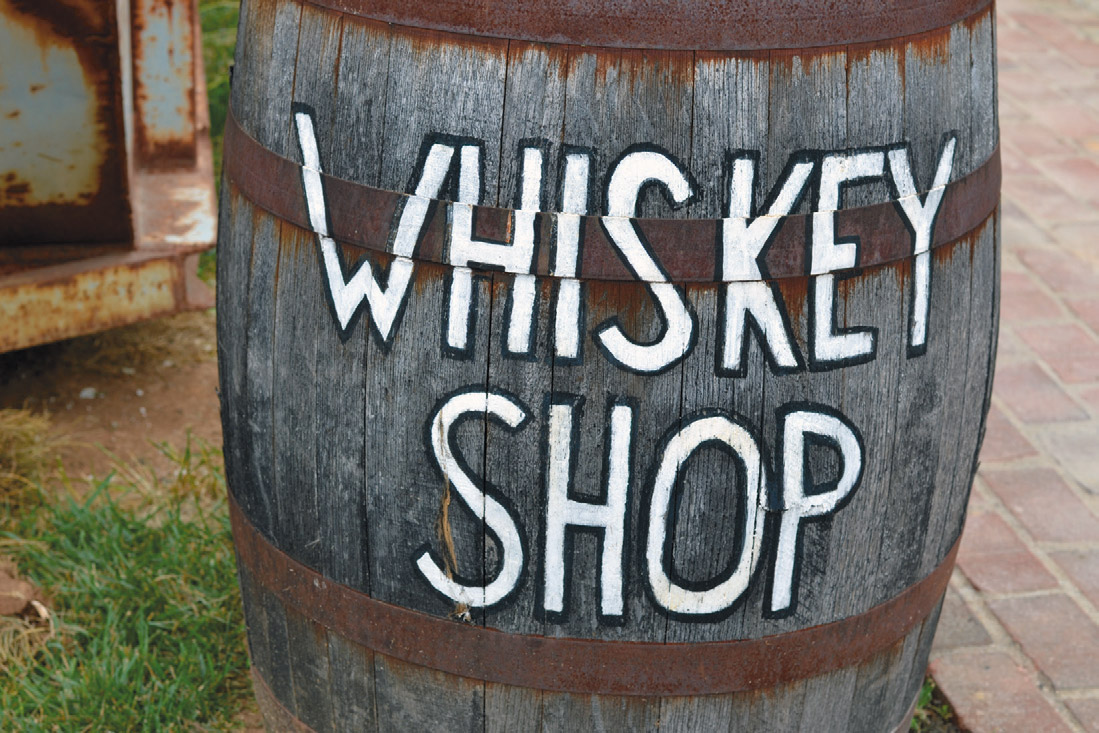
Educated about the base spirit, it’s on to the rickhouse to explore the aging process.
Here, two visitors join the tour: the distillery cats, Noah and Rowan. “At this point, they could give the tour,” Osborne quips. Apparently pleased at the accolades, Noah, an orange tabby, winds between us as we gape and inhale. The scent of the angel’s share that evaporates from the barrels can only be described as heavenly. This, in fact, is what necessitates the cats. More than furry tour guides, they run a security detail.
Rodents enjoy bourbon almost as much as we do.
At Willett, barrels are lifted by old-fashioned pulleys into specific locations within the multi-level space. Based on the season and the positioning, temperature and humidity affect the absorption of the liquor into and out of the wood differently. Ultimately, this is what imparts flavor and color into the final spirit—whether it’s a straight bourbon from a single barrel, or a blend that draws from multiple barrels. Those decisions frame the art.
As we walk a darkened aisle, several forms loom apparition-like above the barrels. They are revealed to be just as enticing as the spirits. A family friend, chef Sean Brock of Husk in Charleston, is aging country ham here, curious if that angel’s share will add something. Sadly, slices are not offered in the tasting room, but we happily select samples. Old Bardstown 90 proof, described as a “gateway dram” for bourbon drinkers by Bill Thomas of DC’s Jack Rose Dining Saloon, makes it back to our car. With caramel and cherry on the nose, plus a hint of licorice, it settles with a hint of peppered floral flavor.
There will be one last stop before Louisville: Buffalo Trace Distillery. Here, something true of each location surfaces. Though the tours are engaging, and you taste fine bourbon along the way, these are manufacturing facilities. That, at its root, is what makes them fascinating.
But first things first. The historic grounds, named a national historic landmark in 2013, are nothing short of magnificent. A 30s-era botanical garden honors Colonel Albert B. Blanton, who distilled here for more than a half a century beginning in 1897. (This includes Prohibition, when a permit to produce spirits “for medicinal purposes” was procured.) Several warehouses date to the 1880s, the sooty black fungus that results from distillation creating a unique patina.
Rechristened in 1999 after the Sazerac Corporation bought the company, Buffalo Trace now produces some of the world’s most rarified brands, including the illustrious Van Winkle, which it distills on contract. In tandem with a brown-spirits revival, they are ramping up production, recently adding 200 acres. For the first time this summer, production ran 24 hours a day.
Their scale explains a rather corporate history video, played during an otherwise fascinating free tour, which traverses right on through the Blanton’s bottling line—tiny metal horses all lined in a row on the bottle tops. It seems strange to loom over folks’ shoulders, but they are clearly used to it. Then it’s off to a tasting, where honey-toffee-toned Eagle Rare captures my attention with a hint of orange. The session culminates with a spirit rarely seen outside of Kentucky: bourbon cream, a boozy vanilla confection that evokes a thickened White Russian but with bourbon’s caramel character.
Perhaps it’s just the booze, but contemplating the trail and its offerings, one is left feeling a bit philosophical. Bourbon is a native spirit, and an old one at that. People in the industry trace deep lineages, whether as distillers, bottlers or maintenance workers. It’s huge business, and legally protected: Bourbon can only be crafted in the US. Witnessing the range of expression teased out from between well-defined legal lines, this seems a clear stroke of luck.
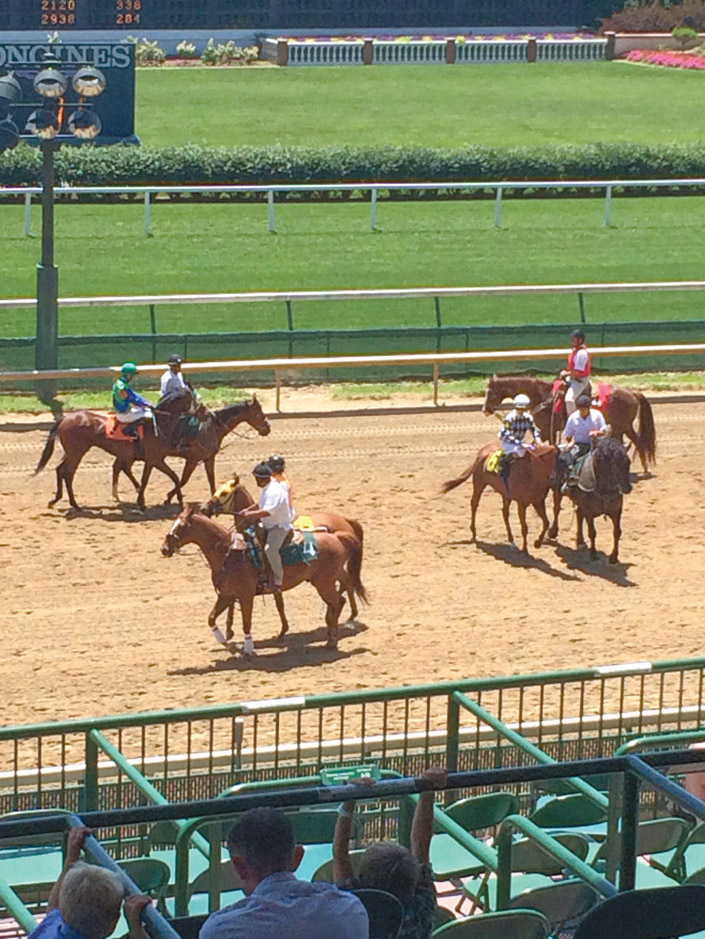
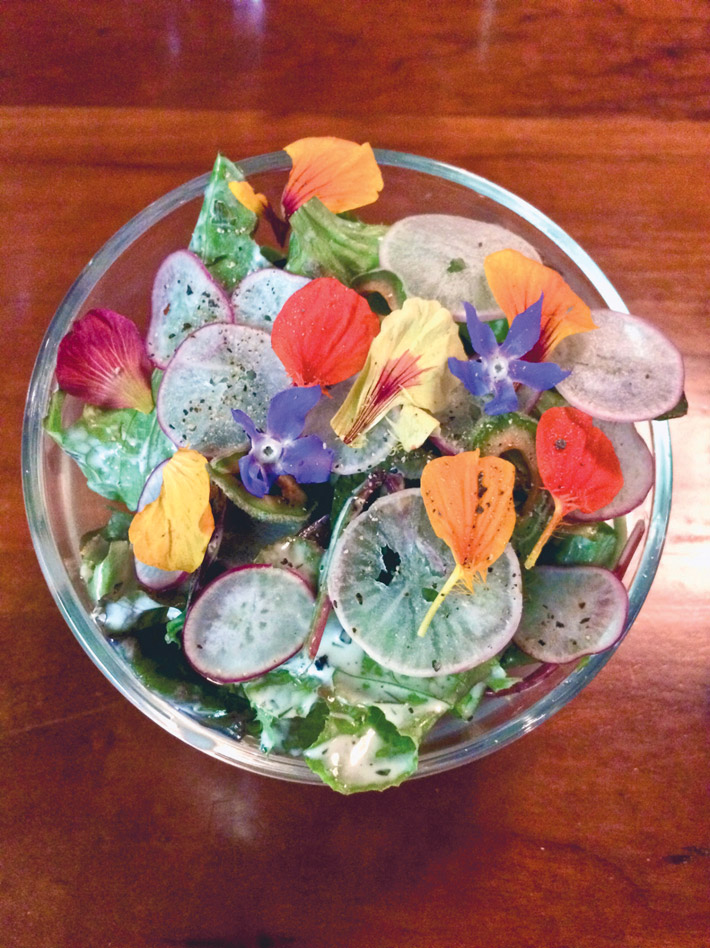
Nightcap in Louisville
We end our adventure in Louisville, bedding down at the Brown Hotel. Legendary hotels often fail to rise to their reputation. Not so here. At the historic lobby bar, we enjoy one too many Old Forester 1920s, which at 115 proof pays tribute to the barreling proof during Prohibition, when they maintained a medicinal barreling license. Caramel and oak hit the nose, but give way to demonstrative black pepper, dark cocoa and a nuttiness that evokes the oak barrel. In the glass and in the room, we drink in the splendor. The opulent hotel opened in 1923. Ornate plaster ceilings soar. Marble columns demarcate space. Yet everyone is down-home friendly, including our bartender, who is busy reorganizing the deep whiskey collection by producer. (Two camps apparently have competing systems.)
Exploring the city, we enjoy cerebral cocktails and grilled eel with puffed rice at Milkwood, chef Edward Lee’s global southern restaurant. We sip local brews, including at the aptly named Holy Grale, which occupies a diminutive Unitarian Church built in 1905.
In vacation fantasy, one could forget the stark lines that divide have and have not, though one sees markers throughout town. We get our own small taste, courtesy of Churchill Downs, where we sip sweet mint juleps and watch but don’t bet on the horses. Struggling to find our seats in the labyrinth, we inadvertently cross into the Turf Club. The guard who admonishes us is not amused, and refuses to offer directions.
With our trip winding down, it is at Edward Lee’s 610 Magnolia that the unifying thread to the trip is found. Lee, it turns out, is good friends with Lundy, even making a cameo in Victuals. In an unassuming Old Louisville house with a lemonade-yellow door, he and executive chef Kevin Ashworth merge a modern-southern sensibility with notes that evoke Lee’s Korean-American heritage. Country ham finds its way to fresh farm-egg ravioli, salty and eye-opening. Spring lamb chops arrive atop gochujang Romesco. Yet, as in Lundy’s book, the most memorable dish is ostensibly the simplest: The Green house Bounty. The salad is like a painting, nasturtium leaves and mandolin-sliced radishes dressed in tangy buttermilk. Everything is fresh-picked from their greenhouse.
The sense of quiet in the bowl serves as an evocation of the landscape and the stories found within, Kentucky-grown ingredients left to speak for themselves.


